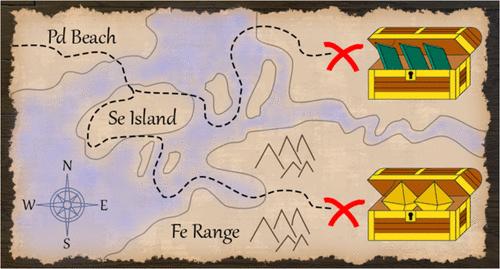钯纳米晶的硒化和黄铁矿化
IF 4.7
2区 化学
Q1 CHEMISTRY, INORGANIC & NUCLEAR
引用次数: 0
摘要
二元和三元硒化钯形成了许多不同的成分和多晶体,这些成分和多晶体具有独特的电子和磁性现象,如超导性、奇异自旋行为和轴相关的导电极性。这些化合物的纳米和微米级形态的溶液相路线的发展将有助于未来在这种尺寸范围内探索这些性质。胶体金属纳米晶体的硒化是制备金属硒化纳米材料的一种有效策略,但目前尚未探索形成富硒化钯硒化相的方法。在这里,我们展示了用这种方法制备亚稳的单斜PdSe2 (M-PdSe2)相的平行六面体颗粒和黄铁矿Fe0.5Pd0.5Se2相的良好面八面体颗粒。我们发现,钯纳米晶体与Na2Se2的反应导致形成无定形的PdSex纳米颗粒作为中间体,然后转化为M-PdSe2(硒化),或者Fe0.5Pd0.5Se2,当也存在Fe2+(黄铁矿化)时。这些发现提供了对钯纳米晶硒化途径的更好理解,以及如何进一步开发它们用于制备三元金属硫系物相。本文章由计算机程序翻译,如有差异,请以英文原文为准。

The Selenization and Pyritization of Palladium Nanocrystals
Binary and ternary palladium selenides form many different compositions and polymorphs that are host to unique electronic and magnetic phenomena such as superconductivity, exotic spin behavior, and axis-dependent conduction polarity. The development of solution-phase routes toward nano- and micrometer-scale morphologies of these compounds would facilitate future explorations of these properties in this size regime. The selenization of colloidal metal nanocrystals is a useful strategy for preparing metal selenide nanomaterials, but it has not yet been explored to form selenium-rich palladium selenide phases. Here, we demonstrate the preparation of parallelepiped-shaped particles of the metastable, monoclinic PdSe2 (M-PdSe2) phase and well-faceted, octahedral-shaped particles of the pyrite Fe0.5Pd0.5Se2 phase via this method. We show that the reaction of Pd nanocrystals with Na2Se2 leads to the formation of amorphous PdSex nanoparticles as an intermediate, before conversion to M-PdSe2 (selenization), or Fe0.5Pd0.5Se2 when also in the presence of Fe2+ (pyritization). These findings provide a better understanding of palladium nanocrystal selenization pathways and how they can be further developed for the preparation of ternary metal chalcogenide phases.
求助全文
通过发布文献求助,成功后即可免费获取论文全文。
去求助
来源期刊

Inorganic Chemistry
化学-无机化学与核化学
CiteScore
7.60
自引率
13.00%
发文量
1960
审稿时长
1.9 months
期刊介绍:
Inorganic Chemistry publishes fundamental studies in all phases of inorganic chemistry. Coverage includes experimental and theoretical reports on quantitative studies of structure and thermodynamics, kinetics, mechanisms of inorganic reactions, bioinorganic chemistry, and relevant aspects of organometallic chemistry, solid-state phenomena, and chemical bonding theory. Emphasis is placed on the synthesis, structure, thermodynamics, reactivity, spectroscopy, and bonding properties of significant new and known compounds.
 求助内容:
求助内容: 应助结果提醒方式:
应助结果提醒方式:


